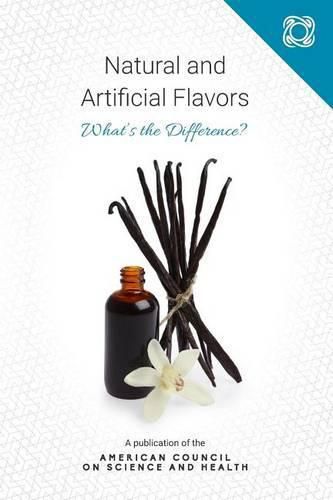Readings Newsletter
Become a Readings Member to make your shopping experience even easier.
Sign in or sign up for free!
You’re not far away from qualifying for FREE standard shipping within Australia
You’ve qualified for FREE standard shipping within Australia
The cart is loading…






Of the many misconceptions used in the natural vs. artificial narrative, two stand out: 1) That artificial flavors are inherently less healthy than their natural counterparts, and 2) that a flavor chemical obtained from a natural source is either different or superior to the same flavor chemical produced in a laboratory or factory. Together, these beliefs represent a cornerstone of the natural movement. As pervasive as this mindset is among consumers of organic and natural goods, it violates simple laws of chemistry. This consumer-friendly publication Natural and Artificial Flavors: What’s the Difference by Dr. Josh Bloom, Director of Chemical and Pharmaceutical Sciences of the American Council on Science and Health, explores the simple laws of chemistry to define the similarities and differences. The goal is to help consumers understand that natural versus artificial flavoring may be more alike in chemical composition than anticipated-and perhaps, just a matter of acquired taste. The American Council on Science and Health is a consumer education consortium concerned with issues related to food, nutrition, chemicals, pharmaceuticals, lifestyle, the environment and health. It was founded in 1978 by a group of scientists concerned that many important public policies related to health and the environment did not have a sound scientific basis. These scientists created the organization to add reason and balance to debates about public health issues and bring common sense views to the public.
$9.00 standard shipping within Australia
FREE standard shipping within Australia for orders over $100.00
Express & International shipping calculated at checkout
Of the many misconceptions used in the natural vs. artificial narrative, two stand out: 1) That artificial flavors are inherently less healthy than their natural counterparts, and 2) that a flavor chemical obtained from a natural source is either different or superior to the same flavor chemical produced in a laboratory or factory. Together, these beliefs represent a cornerstone of the natural movement. As pervasive as this mindset is among consumers of organic and natural goods, it violates simple laws of chemistry. This consumer-friendly publication Natural and Artificial Flavors: What’s the Difference by Dr. Josh Bloom, Director of Chemical and Pharmaceutical Sciences of the American Council on Science and Health, explores the simple laws of chemistry to define the similarities and differences. The goal is to help consumers understand that natural versus artificial flavoring may be more alike in chemical composition than anticipated-and perhaps, just a matter of acquired taste. The American Council on Science and Health is a consumer education consortium concerned with issues related to food, nutrition, chemicals, pharmaceuticals, lifestyle, the environment and health. It was founded in 1978 by a group of scientists concerned that many important public policies related to health and the environment did not have a sound scientific basis. These scientists created the organization to add reason and balance to debates about public health issues and bring common sense views to the public.